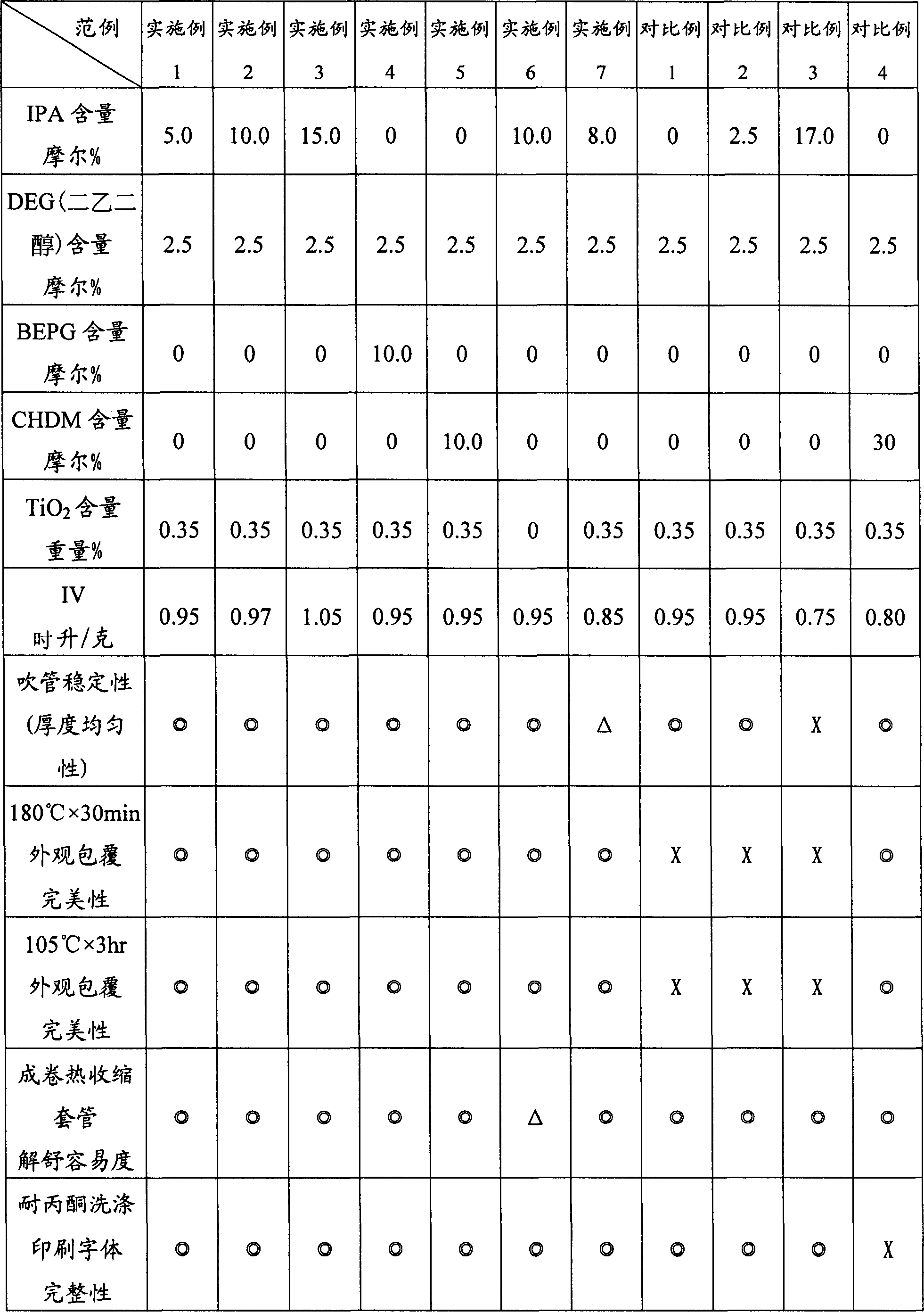Copolymerized ester and method for making heat-shrinkable double-pipe using same
A technology of heat-shrinkable sleeve and copolyester, which is applied in the field of copolyester and the heat-shrinkable sleeve made of this copolyester, which can solve the problems of high price
- Summary
- Abstract
- Description
- Claims
- Application Information
AI Technical Summary
Problems solved by technology
Method used
Image
Examples
Embodiment 1
[0034] Get 10.27 parts by weight of diethylene glycol terephthalate monomer (BHET), and 0.432 parts by weight of isophthalic acid (IPA) and 3.243 parts by weight of ethylene glycol (EG) are put into the reaction tank. When the temperature reaches above 190°C, the esterification reaction starts, and the reaction pressure is 1.0-1.5Kg / cm 2 , react for 180 minutes to make the esterification rate reach more than 95%, add 0.035 parts by weight of titanium dioxide, stabilizer phosphoric acid, and catalyst antimony acetate, and then start vacuuming, so that the temperature of the material is 250 ~ 280 ° C and the reaction is under a vacuum environment of 1 torr When the viscosity is above 0.60 liters / g, it is unloaded and cooled to form cylindrical amorphous raw particles; then the prepared raw particles are put into the solid-state polymerization reaction device, so that the temperature of the ester particles is 190~ At 220°C, increase the viscosity of the ester pellets to 0.95 lite...
Embodiment 2
[0038] As in Example 1, but the diethylene glycol terephthalate monomer (BHET) of 9.73 parts by weight and the isophthalic acid (IPA) of 0.864 parts by weight are put into a reactor and reacted to complete melt polymerization Finally, solid-state polymerization was carried out to increase the viscosity to 0.97 liters / gram; then, various tests were carried out on the heat-shrinkable sleeve made, and the results are shown in Table 1.
Embodiment 3
[0040] As in Example 1, but the diethylene glycol terephthalate monomer (BHET) of 9.186 parts by weight and the isophthalic acid (IPA) of 1.296 parts by weight are put into a reactor and reacted to complete melt polymerization Carry out solid-state polymerization again and increase viscosity to 1.05 liters / gram, when the polyester of this embodiment is carrying out solid-state polymerization, need the warming-up heating condition that is gentler than embodiment 1, otherwise agglomeration phenomenon will occur; The heat-shrinkable sleeves were tested, and the results are shown in Table 1.
PUM
| Property | Measurement | Unit |
|---|---|---|
| size | aaaaa | aaaaa |
| size | aaaaa | aaaaa |
| glass transition temperature | aaaaa | aaaaa |
Abstract
Description
Claims
Application Information
 Login to View More
Login to View More - R&D
- Intellectual Property
- Life Sciences
- Materials
- Tech Scout
- Unparalleled Data Quality
- Higher Quality Content
- 60% Fewer Hallucinations
Browse by: Latest US Patents, China's latest patents, Technical Efficacy Thesaurus, Application Domain, Technology Topic, Popular Technical Reports.
© 2025 PatSnap. All rights reserved.Legal|Privacy policy|Modern Slavery Act Transparency Statement|Sitemap|About US| Contact US: help@patsnap.com

